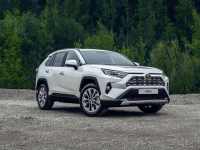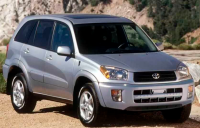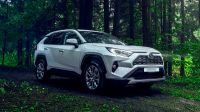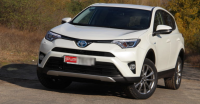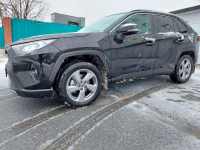
The latest generation Toyota RAV4, introduced in 2018, is still actively discussed on various dedicated forums. Opinions about the car are quite contradictory. They provide a general overview of the advantages and disadvantages of the popular crossover, but do not provide a complete picture. Nevertheless, owners' reviews are much more objective than statements of marketers and assessments of journalists working to order.
In this material the readers will be able to get acquainted with impressions which Toyota RAV4 with a petrol engine 2.5 litres and eight-band automatic transmission has made on its owner. Since the car is relatively new, it's too early to draw final conclusions. Surely, as time passes, the list of merits and demerits of the model can be expanded. So, if it is a verdict, it is not final.
Toyota RAV4 XA50 in Style, 2.5, 4WD, automatic transmission
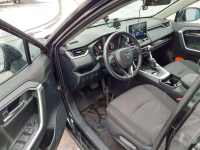
Before buying the car, I studied the available information and went for several test drives before making a final decision. It helped, but not much. Initially I wanted a diesel, but so far only petrol-engined cars are available from official dealers. The engine 2.0 is completed with a variator only, and I don't trust CVT. Therefore the choice of modification with the power unit of 2.5 litres and 199 hp has, in fact, been predetermined.
Pros .
A year and 22 thousand kilometres later I would like to share my impressions about Toyota RAV4 of the fifth generation. I hope, the thoughts expressed by me will be useful to someone. It is possible that they will convince some people in reasonability of purchasing of favorite model and others on the contrary will dissuade from acquisition of Japanese crossover. Positive emotions, personally at me, cause:
Well developed design. The car looks stylish and modern from the outside and from within. If the previous RAW4 looked a little bit feminine, now the car has become manly brutal. True, there is a feeling that experts who were responsible for development of the front part of the car have borrowed many ideas from designers of Subaru.
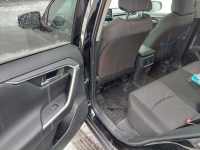
Dynamic performance. Top speed of 200 km/h and acceleration up to a hundred in 8.5 seconds suit me quite well. After all, this is not a sports car, but a crossover. To make fast changes and overtaking, both in the city and on the highway, it's fast enough.
Engine performance. It is difficult to tell yet how reliable the new power unit will prove to be. But it pulls with confidence and spends petrol moderately. Even driving in traffic jams it manages to get down to 10 litres. Probably the reason is in high compression ratio (13:1), almost like in Mazda SkyActiv. It's a series of internal combustion engines with a very high compression ratio (15:1), running on the Miller cycle. They avoid detonation by closing the intake valves later (relative to the crankshaft angle), thereby reducing the compression in the cylinder. - Ed.
Clever all-wheel-drive system settings. Electronic distribution of torque between the wheels depending on road conditions. This allows you to feel confident on a flat tarmac, stepping on the accelerator in high-speed corners and on broken country roads, overcoming not too difficult obstacles.
Excellent steering response. Thanks to the electric power steering the steering wheel does not become sluggish and has no empty zones. There is nothing wrong with handling.
High, 200mm clearance, and power-consuming, but not too soft, suspension. The car easily drives over small irregularities, does not force to clutch heart at the moment of approach to lying policemen, but also does not disturb with strong rocking and rolls.
The boot, capable of holding 580 litres of cargo. For my needs this is more than enough. It's a pity that there are no luggage securing nets included. Nor are they available from official dealers.
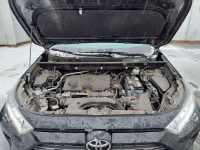
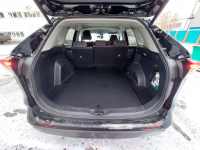
The ergonomics of the interior, on the other hand, are ambiguous. There are no obvious faults, but there are small drawbacks. In particular, not too successfully, in my opinion, the buttons of folding of external mirrors are placed. The microscopic sizes of a glove compartment cause bewilderment.
Disadvantages .
Even annoying trifles spoil the general impression from not bad, as a whole, car. But it is worse when bigger lacks are revealed:
Low dangling lip of a forward bumper limits geometrical passability of Toyota RAW4, once again reminding about true essence of the automobile. Suspension and an all-wheel drive system hint that the automobile is capable of more than scrambling on curbs. But, however they say, it is only a crossover and one should not be keen on assaulting cross-country terrain.
The automatic gearbox works without faults, there are no jerks and lags. But there's no removable sump either, allowing you to change the filter without disassembling the unit. It is rather regrettable. Though the manufacturer positions the automatic transmission as maintenance-free one, in Russian conditions changing of transmission fluid and filter is not a whim but vital necessity.
The capabilities of the multimedia system of the outdated model obviously do not correspond to the price of the car. Quality of the image is displayed at the screen, irrespective of modes, can only satisfy three stars. One should not trust a regular navigator too much. A couple of times it tried to lead me into some mazes, and now I have to treat the recommendations of route choice with care.
Noise isolation of an engine compartment is far from being perfect. The engine is quiet, but you can hear it well in the saloon. Officials say that the manufacturer has not solved this problem yet. It looks like motorists who bought a Toyota RAW4 in 2022 will have to fix this flaw on their own, too.
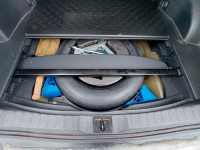
I must honestly say that the advertising brochures that describe the high quality of the interior finishes are misleading to consumers. The materials aren't bad, but they're not perfect. The silver plastic looks like a poor imitation of real metal mouldings.
Conclusion
As well as any other automobile, the design of Toyota RAV4 is built on compromises. On the one hand, developers tried to make the crossover reliable and convenient, and on the other hand, tried to reduce production costs. The results of these contradictory aspirations are not yet completely clear. Practice shows that all pros and cons of new models come out in 4 - 5 years after the beginning of production. We only have to wait a little longer.
